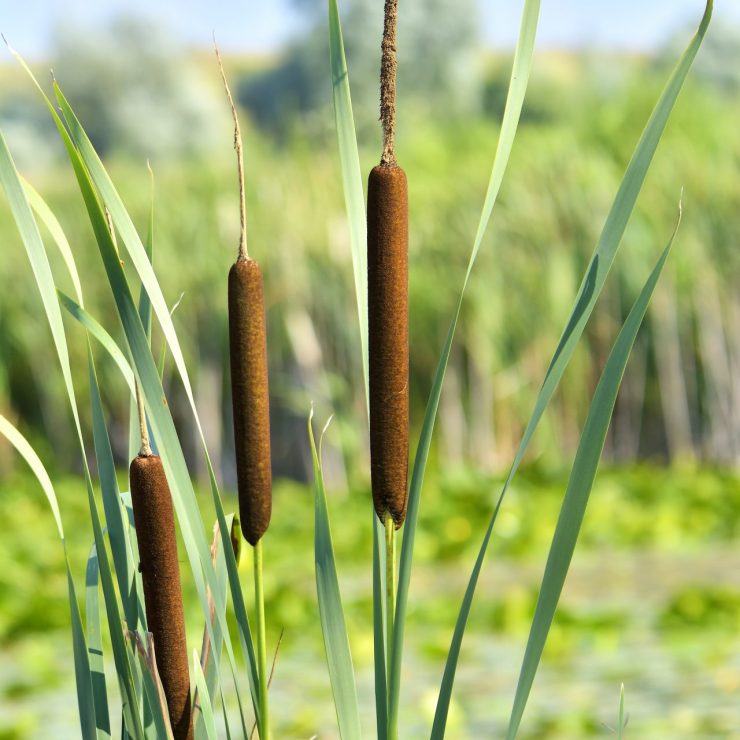By: Hannah McGee, Environmental Scientist
Many people know that plants can stabilize soil, provide food and habitat for wildlife, and improve the aesthetics of their surroundings, but did you know they can also remove harmful toxins from the environment?
Areas that have been developed and used for landfills, industry, mining, and other functions usually remain contaminated for decades, and full restoration of the soil and groundwater can be extremely difficult. In 1980, legislation was put forward to specifically address sites with high contamination levels. These sites, known as “Superfund sites,” are still present in the thousands throughout the US and remain a lasting legacy of the pre-environmental industrial period.[1]
As an environmental consulting firm, Straughan tackles a variety of environmental problems – including remediation of Superfund sites. When restoring these sites we look at all possible methods, including the use of plants. The use of plants to reduce the concentration of contaminants in the soil and water is a field of study known as phytoremediation. The term originated in the 1990s, when a scientist named Ilya Raskin coined the term as part of a study examining the ability of plants to remove metals from soil and water.[2]
Phytoremediation is a great tool to supplement traditional remediation practices, as it provides persistent benefits at an efficient cost when compared to alternative engineering practices/procedures that may be more destructive to the soils and the surrounding environment. Depending on the contaminant of concern, be it heavy metals, plastic waste, or other toxins, phytoremediation can have different roles to play in the restoration process. Some toxins may be completely broken down and removed from the environment, while others may be stored in the plant’s tissue where it can either be harvested and removed or left at the site, where it reduces the transport of the contaminant to surrounding areas.[3]
When is Phytoremediation Useful?
Phytoremediation is utilized around the world for a myriad of reasons – in Italy, a sheep farmer discovered dioxin, a potent toxin, in his herd of sheep. Due to the toxin, the farmer was forced to cull his entire herd. He eventually traced the source of the toxin to a nearby steel plant. To continue farming, he had to find a way to decontaminate his soils. He found that he could plant hemp, which has shown a remarkable ability to store and transform toxins by removing them from the soil and transforming them into harmless compounds in their leaves.[4]
In another unusual case, phytoremediation was found to be a successful strategy in purifying explosive-laden groundwater at army ammunition plants. A 1997 study found that the addition of plants to contaminated groundwater removed 100% of TNT by transforming it into a less harmful compound.[5]
It’s possible that even plastic waste can be addressed by phytoremediation practices. As plastics and their harmful byproducts (such as PCB) garner more attention, the scientific community has turned its eye to phytoremediation as a possible tool in contaminant reduction. By introducing the genes of bacteria that can metabolize PCBs, genetically altered plants may be an effective and cost-efficient method of pulling plastic contamination out of the environment.[6] As plastic use becomes more prevalent and older plastic continues to age, degrade, and leach toxins into the environment, plants may come to perform an even more critical role in public health.
Phytoremediation Spotlight: Cattails
Acting almost as a mascot of the wetland plant community, cattails are a widely known, familiar plant. Cattails are known for their characteristic flowers, edible tubers, and medicinal benefits,[7] but they can also act as potent phytoremediators. Cattails are one of the most popular phytoremediators for sites contaminated with heavy metals, as they are very effective at pulling metals from the soil and storing them in their leaves.[8], [9] Their hardiness and fast-growing nature position them as a favorite among contractors tasked with remediation of wetland sites.[10]
Want to learn more about phytoremediation? Check out these resources:
EPA: A Citizen’s Guide to Phytoremediation
Rolling Stone: Can Hemp Clean Up the Earth?
EPA Phytoremediation Resource Guide
[1] https://www.epa.gov/superfund/what-superfund
[2] https://plantbiology.rutgers.edu/faculty/raskin/Raskin%20Ilya_CV2017.PDF
[3] https://www.nature.com/scitable/knowledge/library/phytoremediation-17359669/
[4] https://www.cbsnews.com/news/cannabis-plant-soil-decontamination-italy-vincenzo-fornaro/
[5] Best, Elly P., Zappi, Mark E., Fredrickson, Herb L., Sprecher, Susan L., Larson, Steven L. Screening of aquatic and wetland plant species for phytoremediation of explosives-contaminated groundwater from the Iowa Army Ammunition Plant. Army Engineer Waterways Experiment Station Vicksburg MS Environmental Lab, (1997).
[6] https://www.ncbi.nlm.nih.gov/pmc/articles/PMC3025541/
[7] https://www.mtpr.org/post/cattail-plant-thousand-uses
[8] Rai, Prabhat Kumar. “Heavy metal pollution in aquatic ecosystems and its phytoremediation using wetland plants: an ecosustainable approach.” International journal of phytoremediation 10.2 (2008): 133-160.
[9] Borowiak, Klaudia, and Kanclerz, Jolanta. “Phytoremediation Applications for Waste Water and Improved Water Quality.” Phytoremediation. Springer, Cham (2016): 213-232.
[10] Neralla, S., et al. “Phytoremediation and on-site treatment of septic effluents in sub-surface flow constructed wetlands.” Environmental technology 20.11 (1999): 1139-1146.
